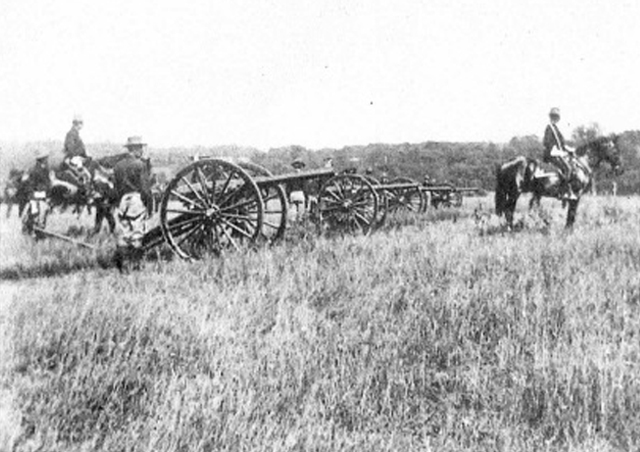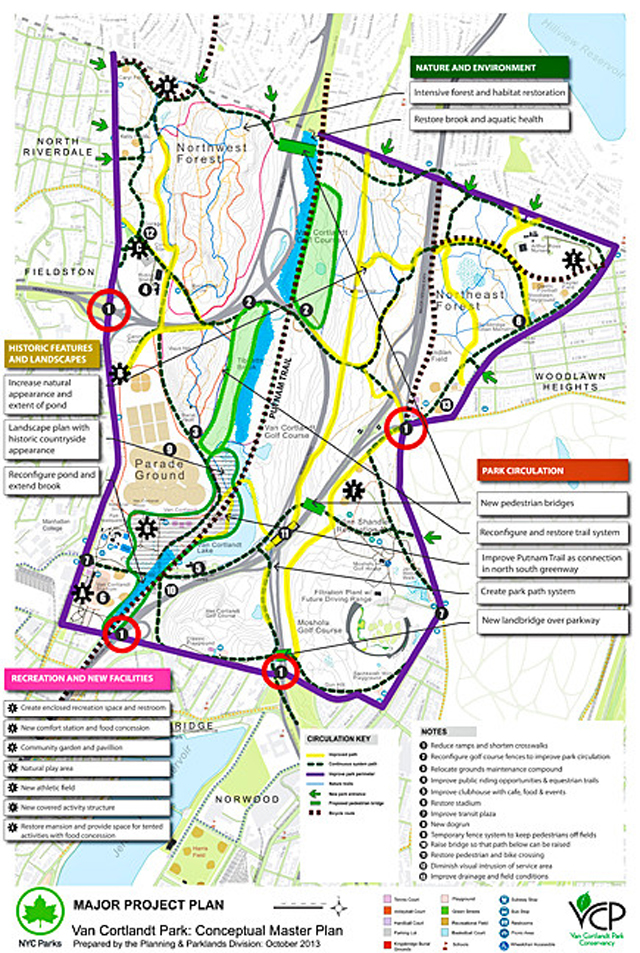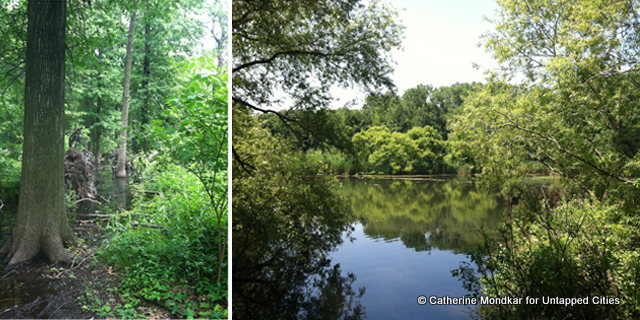 A mock battle staged in the Parade Ground in Van Cortlandt Park held by the National Guard in 1902. Image source: Friends of Van Cortlandt Park and the George Stonebridge Family
A mock battle staged in the Parade Ground in Van Cortlandt Park held by the National Guard in 1902. Image source: Friends of Van Cortlandt Park and the George Stonebridge Family
On this day in history, December 12, 1888, New York City acquired rights to Van Cortlandt Park, now the city’s third largest park. The 1,146 acres of pristine landscape were characterized by dramatic ridges, sweeping hills and open meadows. Previously owned by the Van Cortlandt family since 1691, the history of landowners dates back to the early 1600’s when the Weckquaesgeek Natives Americans sold it to the Dutch West India Company.
Now, for the first time in over a century, a Master plan for Van Cortlandt Park headed by NYC Parks Principal Urban Designer, Charles McKinney is being designed with active community participation. Steeped in history, the park has been home to numerous historic events from the Stockbridge Massacre of 1778, to an ideal location where George Washington stayed on more than one occasion and where soldiers gathered for battle on the Parade Ground during the Revolutionary War.

A map of Van CortlandtPark highlights changes proposed in a 20-year master plan.
Courtesy of the New York City Department of Parks and Recreation.
The idea for a park was originally borne out of a concern that the City’s urban expansion was threatening the area’s natural heritage. John Mullally, an influential figure in the community began the New York Parks Association in 1881 to garner support for his initiative. However, since the late 19th century, the park has been employed for many more uses than it was originally intended to provide.
From the Putnam Railroad dividing Van Corlandt Lake in 1872 to the first municipal golf course in the nation in 1895, the park has been drastically changed to accommodate transportation and recreation. Perhaps the most significant modification the park endured, came when Robert Moses implemented a series of three majors highways with the Mosholu and Henry Hudson Parkways built between 135-37 and the Major Deegan Expressway in 1956 sectioning off the once unified park into seven pieces.

A wooded wetland forest and view of Van Cortlandt Lake showcase the Park’s majestic and varied natural beauty.
While the park is home to avid cricketers, bocce players, and cross country runners, 681 acres of the park is undeveloped natural woodland, and 89 acres is home to urban wetland. Although this swath of land is heavily threatened by invasive plant species, it is also home to numerous plants indigenous to New York City, as discovered in the ecological assessments of the park conducted by NYC Parks in 1988 and 2010.
Today, after 125 years belonging to NYC, Van Cortlandt Park still represents the city’s natural heritage and described by the Van Cortlandt Park Conservancy as “a showcase of the last vestiges in the City of Upstate New York’s native woodlands.” With continued strategic efforts to protect its ecological health and to enhance the park goers experience through the first ever master plan, there’s much reason to celebrate the beauty and historical importance of this great park.
Catherine is a Conservation Corps Fellow at the New York City Department of Parks and Recreation and former intern on the Van Cortlandt Park master plan team.





